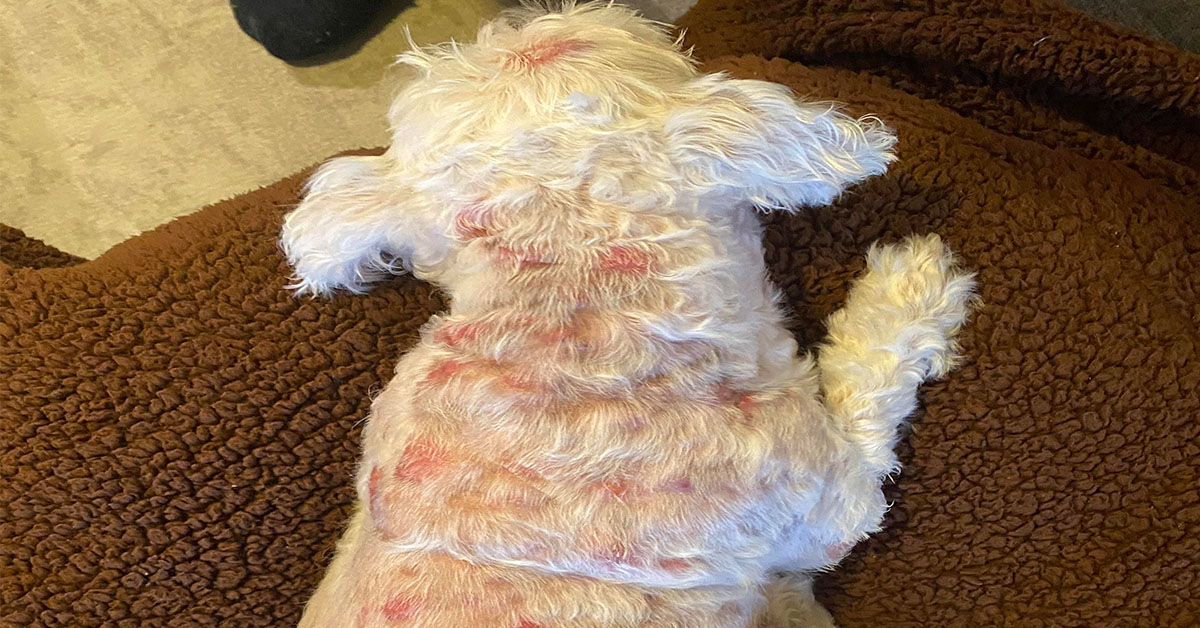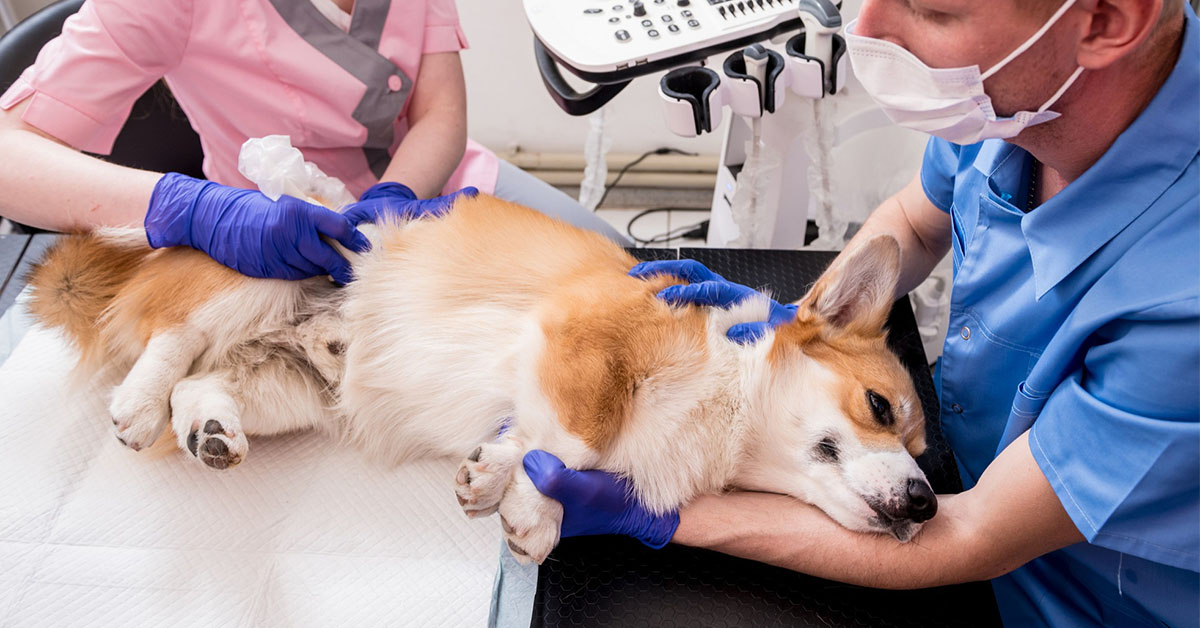Globally, staph infections in dogs are a significant concern for pet owners. Even though they’re often overlooked, these infections can cause discomfort and health complications. Staphylococcus bacteria are opportunistic pathogens that can manifest in mild skin irritations to severe pyoderma.
Therefore, recognizing the signs, understanding the causes, and knowing the treatment options are crucial to keeping your pet dogs healthy. This guide provides the knowledge to identify, manage, and treat staph infections in dogs. Let’s dive in.
What are Staph Infections in Dogs?

Staph infections (aka staphylococcal infections) are bacterial infections caused by the Staphylococcus bacteria. These bacteria are commonly found on the skin and mucous membranes of humans and animals, including dogs. The most common form of staph infection in dogs is superficial skin infection.
Types of Staph Infections in Dogs
Different types of staph infections can affect dogs, including:
- Superficial Infections: These infections affect the outer layers of the skin, causing redness, swelling, and pustules. The symptoms are usually mild and localized.
- Deep Pyoderma: Staph infections can penetrate deeper layers of the skin, causing deep pyoderma. If left untreated, this infection can cause extensive skin lesions and ulcerations and even spread to other body parts.
What Causes Staph Infections in Dogs
Dogs have several causes of staph infections, so knowing them is crucial to preventing and treating them. Several common causes of dog staph infections include:
Weakened Immune System
Staph infections are more likely to occur in dogs with weakened immune systems. Malnutrition, chronic illness, and certain medications can compromise the immune system, making dogs more susceptible to bacterial infections.
Skin Irritation
Staphylococcal bacteria can infect the skin through irritated or damaged skin. Allergies, flea infestations, cuts, scrapes, and hot spots (acute moist dermatitis) are common causes of dog skin irritation.
Poor Hygiene
Dogs with poor grooming and hygiene practices can get staphylococcal bacteria on their skin. Maintaining a clean environment and bathing your dog regularly can reduce the risk of staph infections.
Environmental Factors
Staphylococcus bacteria are ubiquitous in the environment, and dogs may come into contact with them in various ways. Surfaces, soil, water, or contact with infected animals can introduce staphylococcal bacteria to a dog’s skin.
Underlying Health Conditions
In dogs, hormonal imbalances (like hypothyroidism), diabetes mellitus, and autoimmune disorders can increase the chances of getting staph infections.
Pet owners can reduce the risk of staph infections by addressing these underlying causes.
Symptoms of Staph Infections in Dogs

It’s essential to recognize the symptoms of staph infections in dogs so you can get them treated early. Depending on the severity and location of the infection, staphylococcal infections can look different. Here are some symptoms to watch out for:
Skin Lesions
It is common for superficial staph infections to appear as small, red bumps or pustules on the skin. These lesions are often itchy and can spread to different parts of the body.
Redness and Swelling
The skin may become inflamed, red, and swollen when infected. The skin may feel warm to the touch in some cases.
Pain and Discomfort
Dogs with staph infections may excessively scratch, lick, or chew at the affected areas. Infected areas may also show signs of pain when touched.
Hair Loss
When staph infections or deep pyoderma are severe, hair loss may occur. A strong odor may be associated with the infection, and the skin may become crusted or ulcerated.
Secondary Infections
Staph infections may predispose dogs to secondary infections, including bacterial and fungal infections. Symptoms of secondary infections include worsening skin lesions, increased inflammation, or discharge.
Systemic Symptoms
Symptoms such as fever, lethargy, loss of appetite, and swollen lymph nodes may occur in severe cases or when the infection spreads beyond the skin.
Staph infections in dogs can have different symptoms depending on the dog and the severity of the infection. You should consult your veterinarian if you notice any of these symptoms.
Diagnosis of Staph Infections in Dogs

Treatment of dog staph infections requires accurate diagnosis. Veterinarians use several diagnostic methods to confirm a staph infection and figure out how to treat it. The main diagnostic methods are:
Physical Examination
During the physical examination, the vet will look for skin lesions, redness, swelling, or other signs of infection. They may also ask about the dog’s medical history and recent activities.
Skin Cytology
Skin cytology involves collecting and examining samples of cells and discharge from the affected skin lesions under a microscope. It helps identify the presence of bacteria, such as Staphylococcus, and assess the severity of the infection.
Bacterial Culture and Sensitivity Testing
Occasionally, the veterinarian may recommend obtaining a bacterial culture from the affected skin lesions. It involves collecting a sample of the infected tissue and growing the bacteria in a laboratory setting. Afterward, sensitivity tests are conducted to determine which antibiotics are most effective.
Treatment Options for Staph Infections in Dogs
Usually, dogs with staph infections require medical treatment and supportive care. The specific treatment approach depends on the severity of the infection, the dog’s overall health, and any underlying conditions. The primary treatment options are:
Antibiotics
Antibiotics are often prescribed to treat staph infections in dogs. Bacterial culture and sensitivity tests help identify the best antibiotics for treating the specific strain of Staphylococcus bacteria causing the infection. Follow your veterinarian’s instructions regarding the dosage and duration of antibiotic treatment to ensure successful resolution of the infection.
Topical Treatments
Topical treatments, such as medicated shampoos, sprays, and ointments, can help relieve symptoms and promote healing. They may contain antibacterials, antiseptics, or corticosteroids to reduce inflammation.
Wound Care
Dogs with open sores or ulcerations need wound care to manage staph infections. The veterinarian may suggest washing the affected areas with an antiseptic solution, applying topical medication, and keeping the dog from licking or scratching.
Systemic Support
When a dog has a severe or systemic staph infection, supportive care may be necessary to address any underlying health issues. This care might involve dietary changes, supplements to boost immunity or more medication.
Environmental Management
Environmental factors can significantly contribute to dog staph infections. Cleaning up the dog’s living space and minimizing bacteria exposure can help prevent recurrences. Bathing, grooming, and laundering the dog’s bedding and toys can help reduce the bacterial load.
Prevention of Staph Infections in Dogs
Maintaining optimal skin health and minimizing bacterial exposure are key to preventing staph infections. Here are some preventative measures:
- Bathe and groom your dog regularly with mild shampoo, rinsing thoroughly afterward to prevent irritation.
- Keep vaccinations and parasite control up-to-date by scheduling regular wellness exams with your veterinarian.
- Use mild grooming products and avoid over-bathing your dog. Keep his skin clean and dry.
- Consult a veterinarian for dietary recommendations tailored to your dog’s needs, and provide a balanced, nutritious diet.
- Maintain a clean and disinfected environment for your dog, including bedding, toys, and common areas.
- Check your dog for skin irritation or infection signs, such as redness, swelling, or unusual behavior, and seek prompt veterinary attention.
Are Staph Infections in Dogs Contagious
All dogs, cats, and humans have staphylococcus bacteria on their skin as part of their normal skin flora. Infections only happen when the skin is damaged, or an underlying medical condition compromises the immune system.
Typically, staph infections spread from animals to humans via direct contact with contaminated objects or infected skin lesions. Healthy hygiene and promptly treating wounds and underlying medical conditions can prevent staph infections.
The Takeaway
Even though staph infections are common and often manageable, proactive pet care is essential. Taking the precautions outlined in this guide will significantly reduce the risk of infections in dogs and ensure their well-being. Regular veterinary consultations, good hygiene practices, and a healthy lifestyle are the keys to preventing staph infections in dogs.




